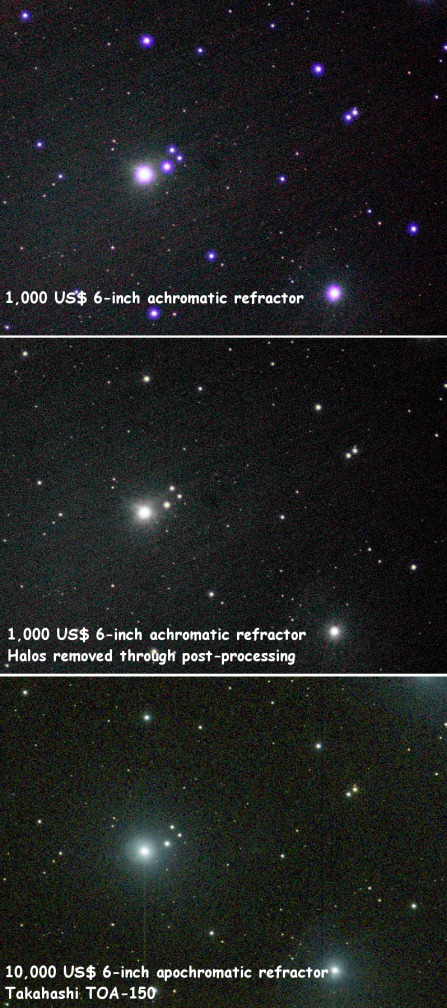Very close to Tringulum galaxy M33 we may spot a bright open cluster towards Perseus constellation. Its name is M34 and here it is a picture I took today through a remote 6 inch apochromatic refractor on New Mexico that shows colorful stars. Enjoy it!
Archive for apochromatic
M34 Open Cluster at Perseus Constellation
Posted in Astrophotography with tags 6 inches, apochromatic, Astronomy, Astrophotography, color, Fitswork4, M34, Open Cluster, Paint Shop Pro 9, refractor, starts, Telescope on 2013/10/12 by computerphysicslabSharing raw footage of Jupiter and Saturn
Posted in Astrophotography with tags apochromatic, Astronomy, Canon EOS 450D, fs102, Jupiter, Rebel XSi, refractor, Registax, Saturno, stacking, takahashi, Telescope on 2011/02/11 by computerphysicslabOn 2011-02-06 I took some videos of Jupiter and Saturn through a (4 inch) 102mm apochromatic refractor telescope. Applying Registax I got the results of the picture.
I’d like to share these two videos with anybody interested in playing with them:
http://www.mediafire.com/file/tqkri1z5z4pw8ge/Saturn-Takahashi-FS-102-F40-2011-02-06-divx.avi
http://www.mediafire.com/file/jbu38q5ucq9diwz/Jupiter-Takahashi-FS-102-F40-2011-02-06-divx.avi
Apochromatic vs Achromatic Refractor
Posted in Astrophotography with tags aberration, achromatic, apochromatic, Astronomy, Astrophotography, chromatic, compare, equipment, myth, Sky Watcher, takahashi, Telescope, versus on 2010/10/14 by computerphysicslabPeople should think twice before purchasing an apochromatic refractor as opposed to an achromatic telescope. There is a huge difference in price and a small difference in performance according to an experiment I made recently.
In doing astrophotography, people use to spend a lot of money in equipment. It is important not to fall into the elitist apochromatic myth if you want to save some money.
I took a single 30 seconds shot to Pleiades open cluster (M45) using my 6-inch Sky-Watcher achromatic refractor that costs around 1,000 US$. Then I used a 6-inch apochromatic Takahashi TOA-150 that costs around 10,000 US$ to take an equivalent shot on the same field.
Resulting images speak by themselves. Obviously achromatic refractor shows a blue halo around stars, due to chromatic aberration. Nevertheless, a simple post-processing technique can remove the halo, obtaining a similar image to apochromatic’s.
Now, the question is: Is it worth paying the extra 9,000 US$?


